Networks are rapidly becoming larger and more complex, with numerous technologies playing into their growth and expansion. Network mapping has become increasingly important for administrators and managers tasked with handling these growing networks. Though the process of local area network (LAN) mapping can be performed manually, this manual work is risky, as there’s a higher chance something will be missed when it involves highly complex networks.
With the significant amount of network topology mapping software available on the market these days, I decided to review the tools network pros need to check out to help reduce their workloads and improve accuracy. I go over why SolarWinds® Network Topology Mapper (NTM) is a top choice for those looking for high-quality mapping software. Spoiler alert: this tool uses the best network mapping techniques to automatically discover your network topology, and it creates several types of informative visualizations, allowing you to easily see and navigate your network. And if you need a more comprehensive monitoring solution, I explain why SolarWinds Network Performance Monitor (NPM) is a good all-in-one option for those looking for a tool with other essential performance measuring tools in addition to a network topology mapper.
Skip to Best Network Mapping Tools List >>>
But First: What Is Network Mapping?
Network topology mapping is the process of visually and logically mapping the network to understand the connections between the server and different nodes. Network performance software and tools usually include some network mapping features to help optimize the network.
Network maps are useful resources when admins conduct performance monitoring processes to check each part of the network. Maps can help show where performance bottlenecks exist and where there are opportunities to improve, improving service quality for end-users. Network performance monitoring outputs admins can visualize in network maps include metrics like the latency between the server and clients, bandwidth, throughput, and errors or failures.
Why You Should Use a Network Topology Mapper
Network topology mapping gives you a high degree of visibility into your network and the relationships between your network devices. This visibility can be extremely useful for everything from troubleshooting problems to maintaining network security. Even if you use the best network mapping techniques, manual mapping is a time-consuming process often resulting in incomplete topology diagrams if you don’t keep up with each new device added to or removed from your network.
You should use a network topology mapper to make sure your network topology diagrams are always up-to-date. A robust network topology mapper offers network admins the tools they need to map networks at any scale, from the smallest business to the biggest enterprise. It also lets you map a specific packet pathway for help with traffic bottlenecks and service provider status. With a network topology mapper, admins can see a device’s status as well as its logical connections at the touch of a button. In short, if you’re interested in having a topology map capable of giving you the insights you need to improve your network performance, you need to use a network topology mapper.
Top Network Mapping Techniques
There are a few ways to think about network mapping techniques. The first is to consider physical vs. logical topology mapping. Physical mapping is all about the concrete network, from cables to terminations. Logical network mapping is more common, and it focuses on data behavior within the networked environment rather than the physical layer. A logical network map is appropriate for a greater range of use cases, as it provides an accurate sense of how the network’s data actually works, with insight into features like routers, subnets, and so on. However, a physical map can be useful for network engineers.
Another way to think about network mapping techniques is to consider manual, semi-automated, and fully automated techniques for creating maps. Manual maps take time to create and aren’t useful for highly dynamic networks. But a manually created Visio map can be useful if you want to create a highly complex, nested map to fit unique specifications.
For most, semi-automated or automated network topology mapping is more useful and feasible. A semi-automated map might be able to automatically discover new devices on the network, but you’ll still need to take steps to position devices and set connections correctly. Automated network topology mapping is responsive to your network environment as it changes, adjusting devices, their connections, and the performance of those connections on an ongoing basis to display an updated and complete logical map.
To optimize your network topology mapping efforts, you should invest in a tool capable of automating the mapping process, creating an initial network map when it’s first installed, and regularly scanning your network to ensure the map always reflects your current network and device relationships. The best network topology mappers will also be configurable and customizable, allowing you to adjust the frequency of network scans and easily create visual representations of different aspects of your network.
Best Network Mapping Tools
I believe using network mapping software is a vital step in managing your network efficiently and professionally in any business setting. There are several tools you can use, including some free network topology mapper tools, but I recommend a couple of products due to their extensive feature lists and easy-to-use nature.
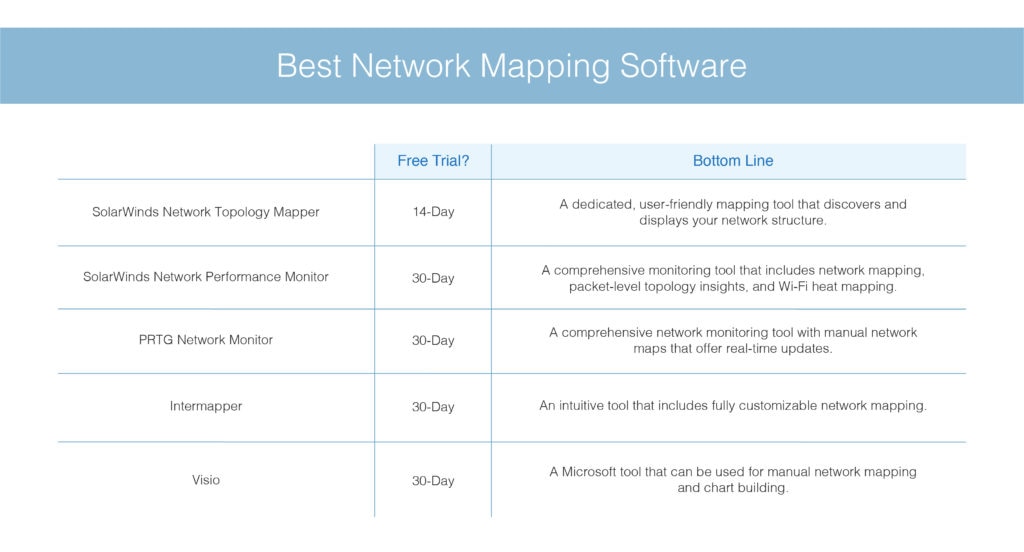
Network Topology Mapper
SolarWinds Network Topology Mapper is a dedicated network mapping tool. It automatically discovers and maps out your network topology and shows you the structure of your network in easy-to-view diagrams.
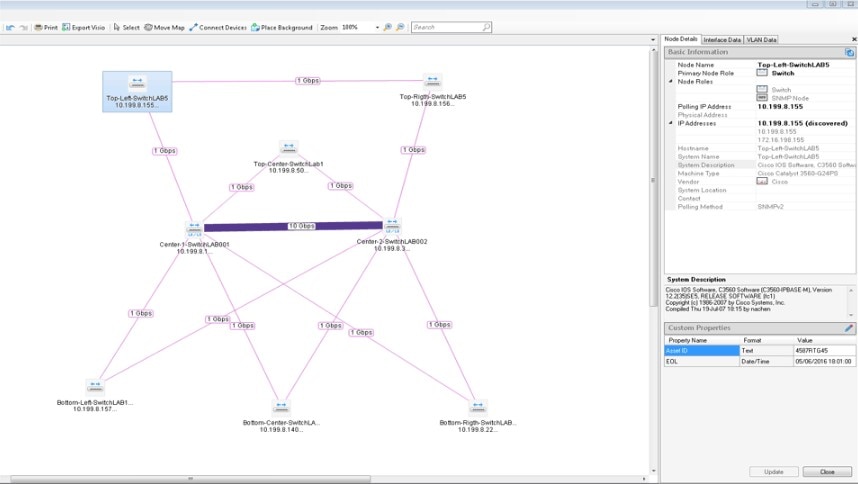
From a single network scan, NTM can build multiple maps, allowing you to compare and choose the map best suited to your needs. It also integrates well with other software, allowing you to export to Microsoft Office Visio as well as PDF and PNG formats. You can try NTM free for 14 days.
Network Performance Monitor
For a more comprehensive network topology mapper with additional features, I recommend SolarWinds Network Performance Monitor. NPM includes packet-level network topology insights (including cloud and VMware environments) and also offers great Wi-Fi heat mapping tools.
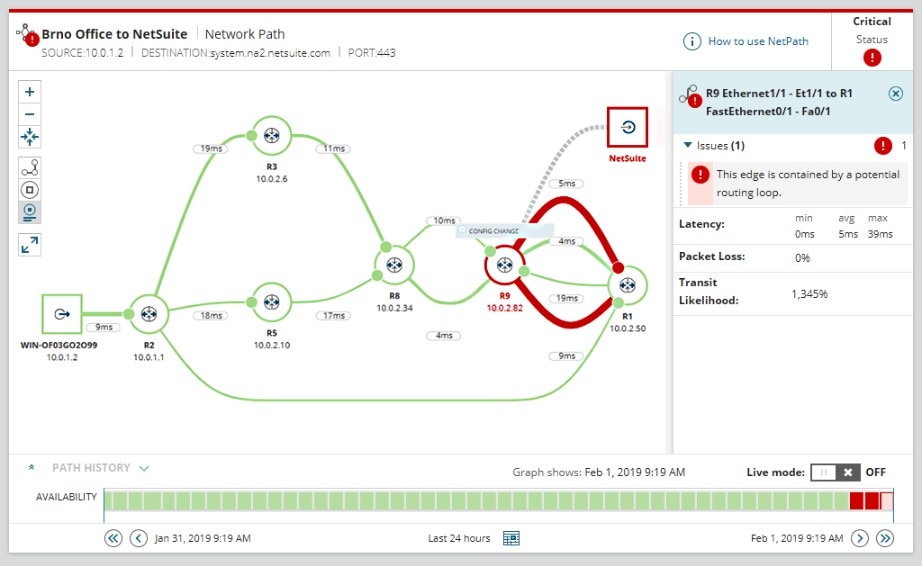
With the NetPath™ function, you can gain insight not just into your own network but into data pathways all the way to destination services. You can see hop-by-hop packet paths and instantly know where issues are occurring. You also get features such as the PerfStack™ dashboard, which allows you to compare the performance of different metrics side by side.
NPM includes troubleshooting features and alerts and is designed to be an easily scalable and reliable centralized network management tool. This is my pick if you want a truly comprehensive tool for provisioning and maintaining your network topology. You can get more information about the features of this network mapping tool here.
PRTG Network Monitor
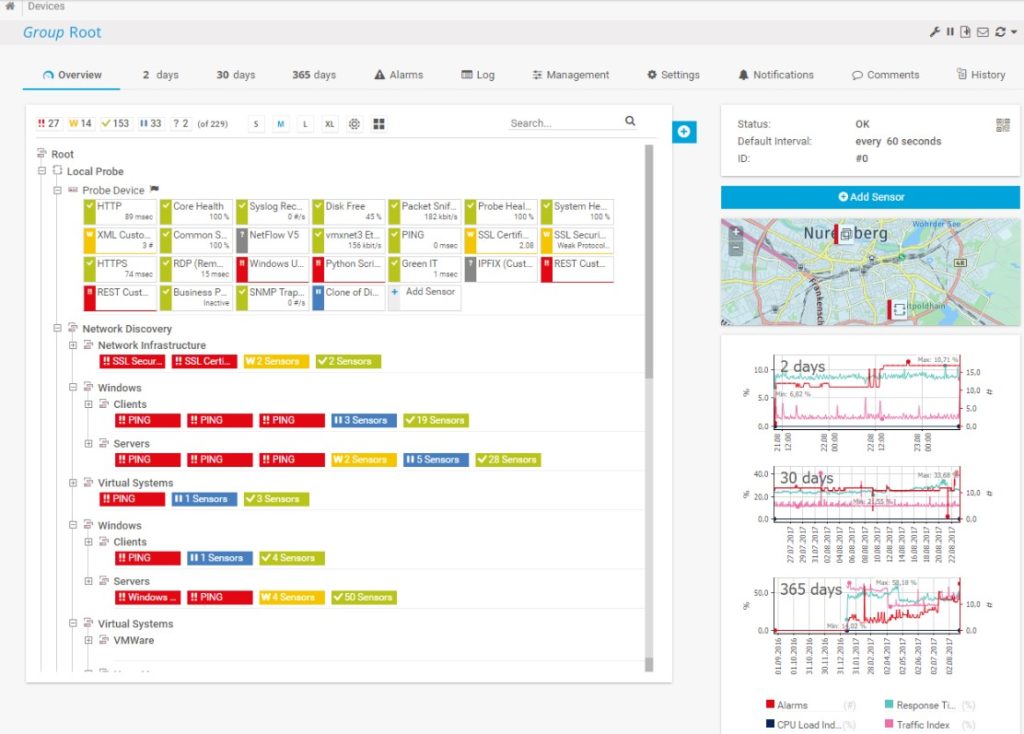
PRTG Network Monitor is another comprehensive network topology mapping software offering network monitoring for the entire network, including network traffic, application performance, cloud services, and database capacity as well as network uptime, security, and hardware longevity. You can use it for network topology mapping, as it allows you to create maps using the PRTG map designer. This is a manual process, but once you’ve created the maps, you can use them to view network information in real time for your devices, connections, and status updates. This software is on the pricier end for what it offers.
Intermapper
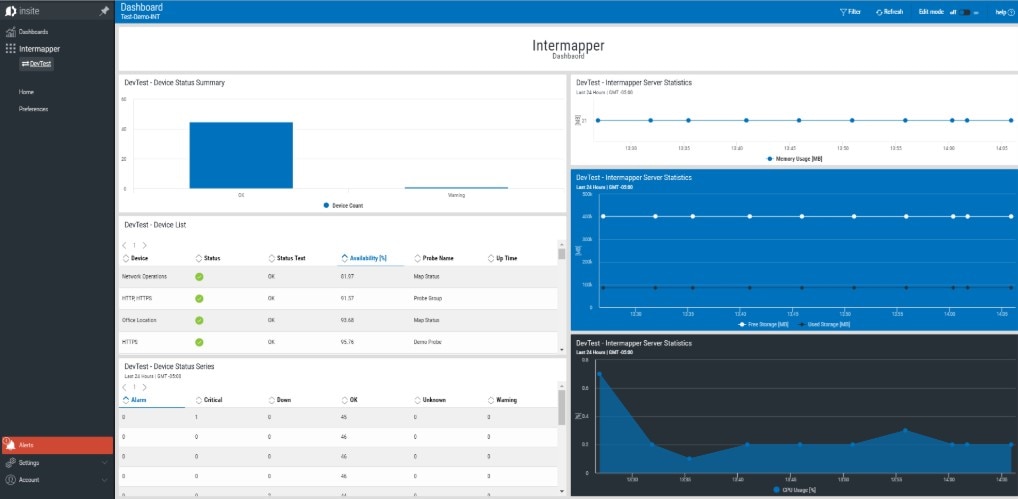
Another great option for network mapping software is the Intermapper tool by HelpSystems. The Intermapper tool has both network mapping and network performance monitoring features, and it has cross-vendor support for Cisco, Apple, Dell, and more. With an intuitive and clear display, it provides a fully customizable network map, allowing you to see real-time network health with color-coded animations. You can choose either device-based pricing or a flat fee for unlimited devices.
Visio
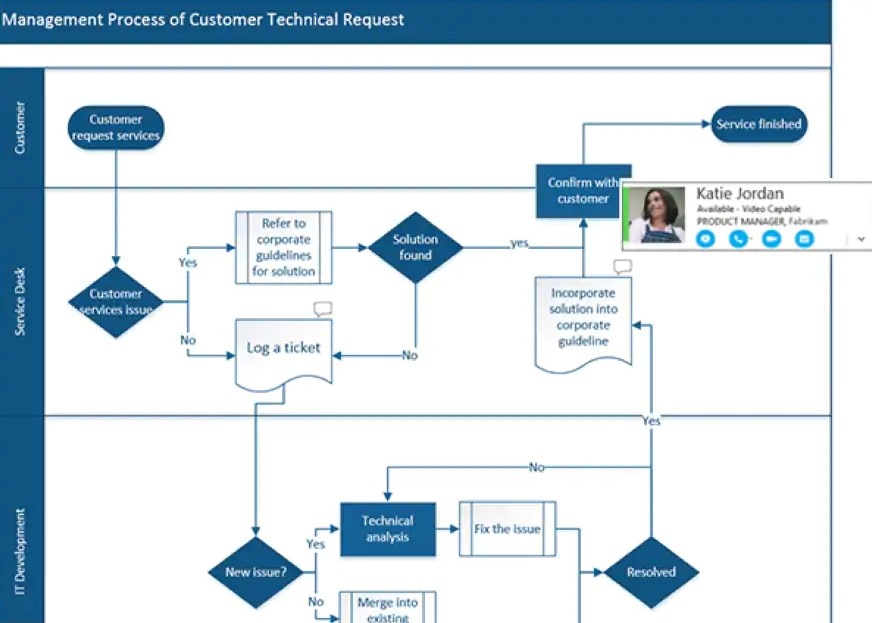
Visio is the Microsoft diagramming and vector application for creating maps and charts (including network maps). Visio isn’t technically a network mapping tool, but network administrators can use it for this purpose. However, the network diagram needs to be created manually using the “Detailed Network Diagram” template. Generally, automatic network mapping tools may be more suitable for troubleshooting and security purposes. Visio can be an inexpensive option for an enterprise unwilling to invest in automated and comprehensive network mapping software.
Getting Started With Network Mapping
As you can tell, there’s a lot of network topology mapping software out there, from simple network topology mappers and flow-chart programs to comprehensive network performance tools. When compared to some of the best free mapping software, paid products might seem expensive at first glance. However, paid network mapping and performance monitoring tools are much more comprehensive, reliable, and complete when it comes to usefully mapping your network.
I highly recommend SolarWinds Network Performance Monitor or Network Topology Mapper for professional network administrators looking for tools to help them manage their environments.
Recommended Reading:
Ultimate Guide to Network Monitoring: If you’re looking at mapping your network and using software to do so, make sure you look at this comprehensive guide on network monitoring. Understanding your network and how it functions is essential for the mapping process to be useful.
